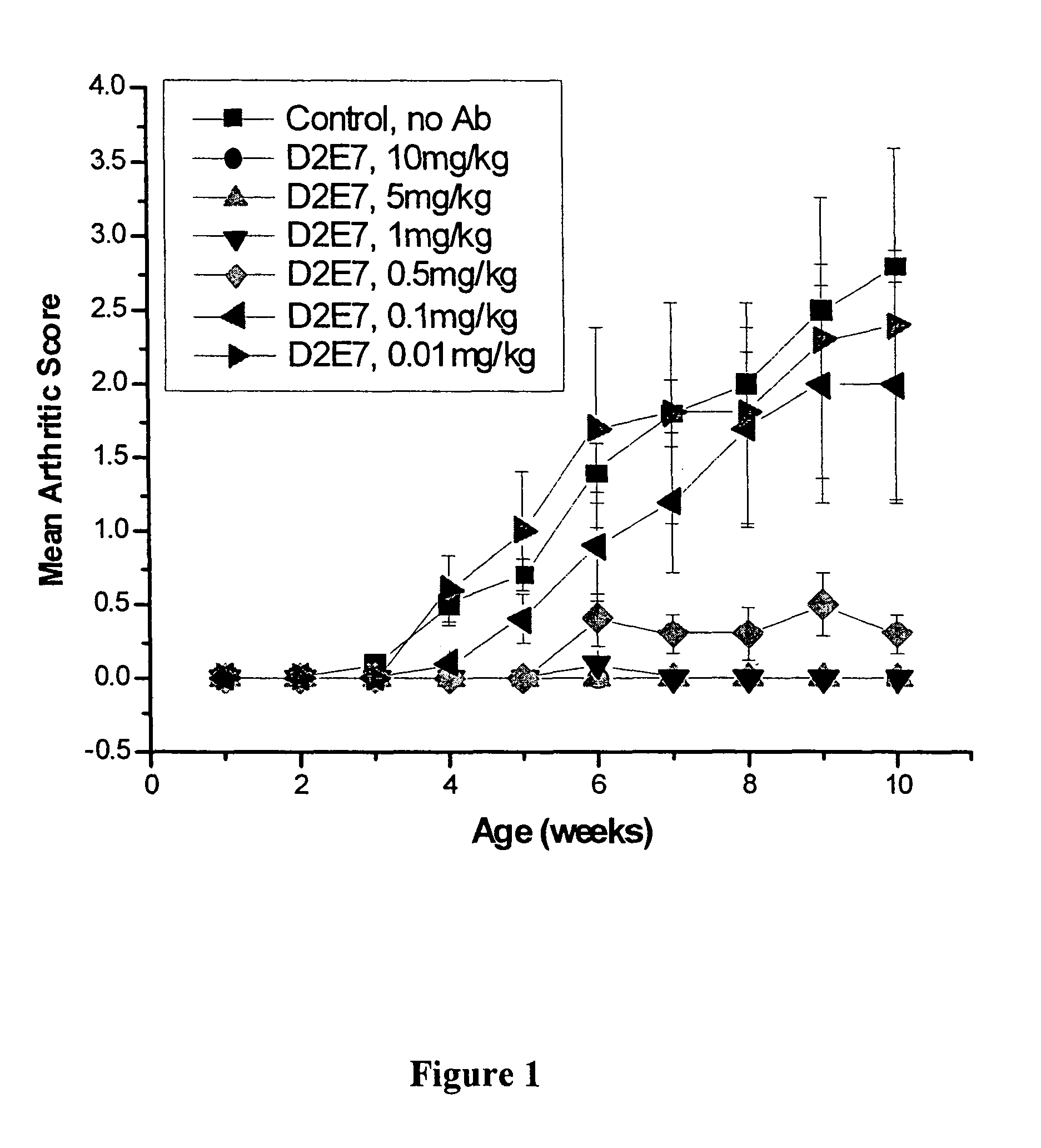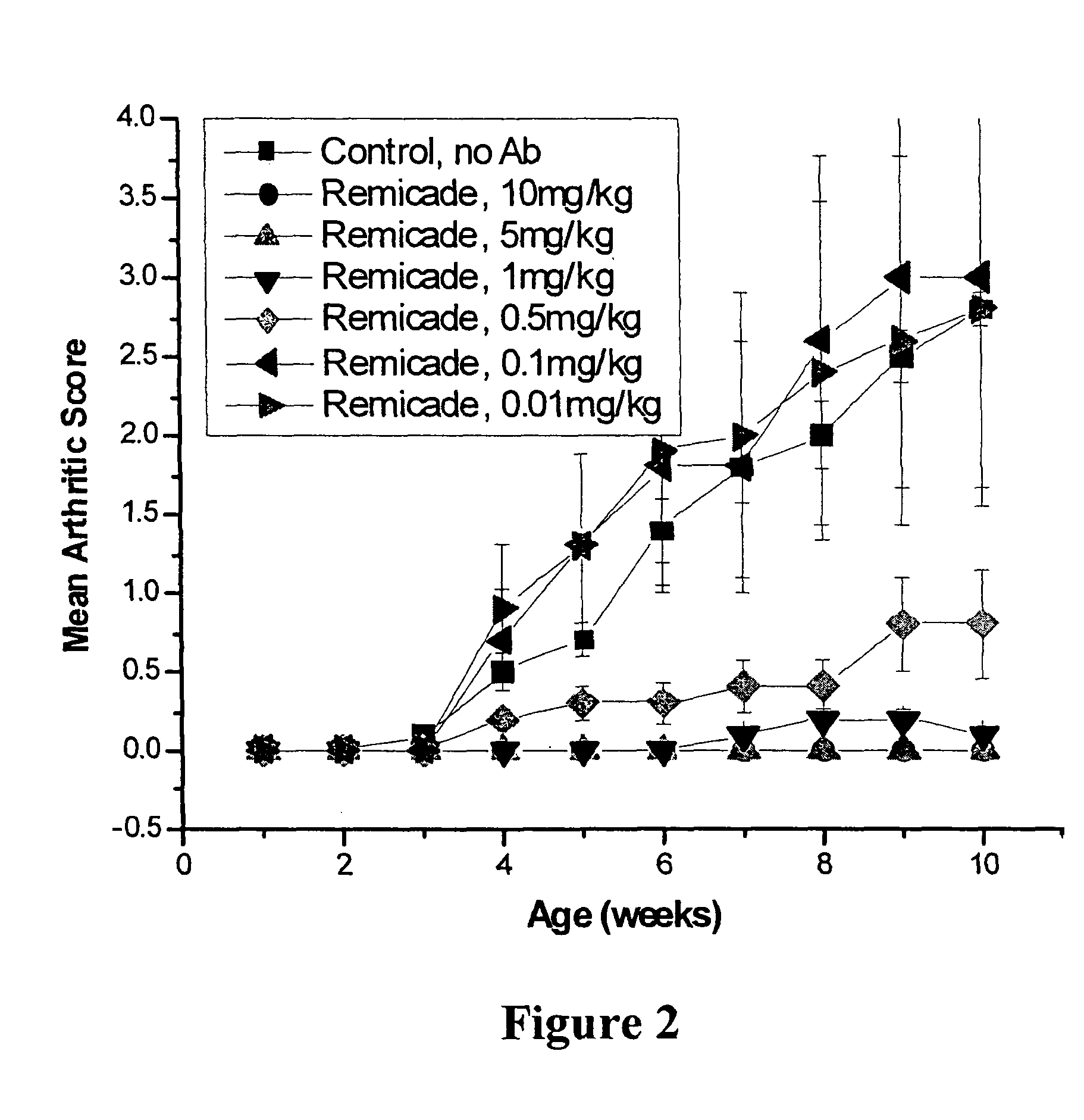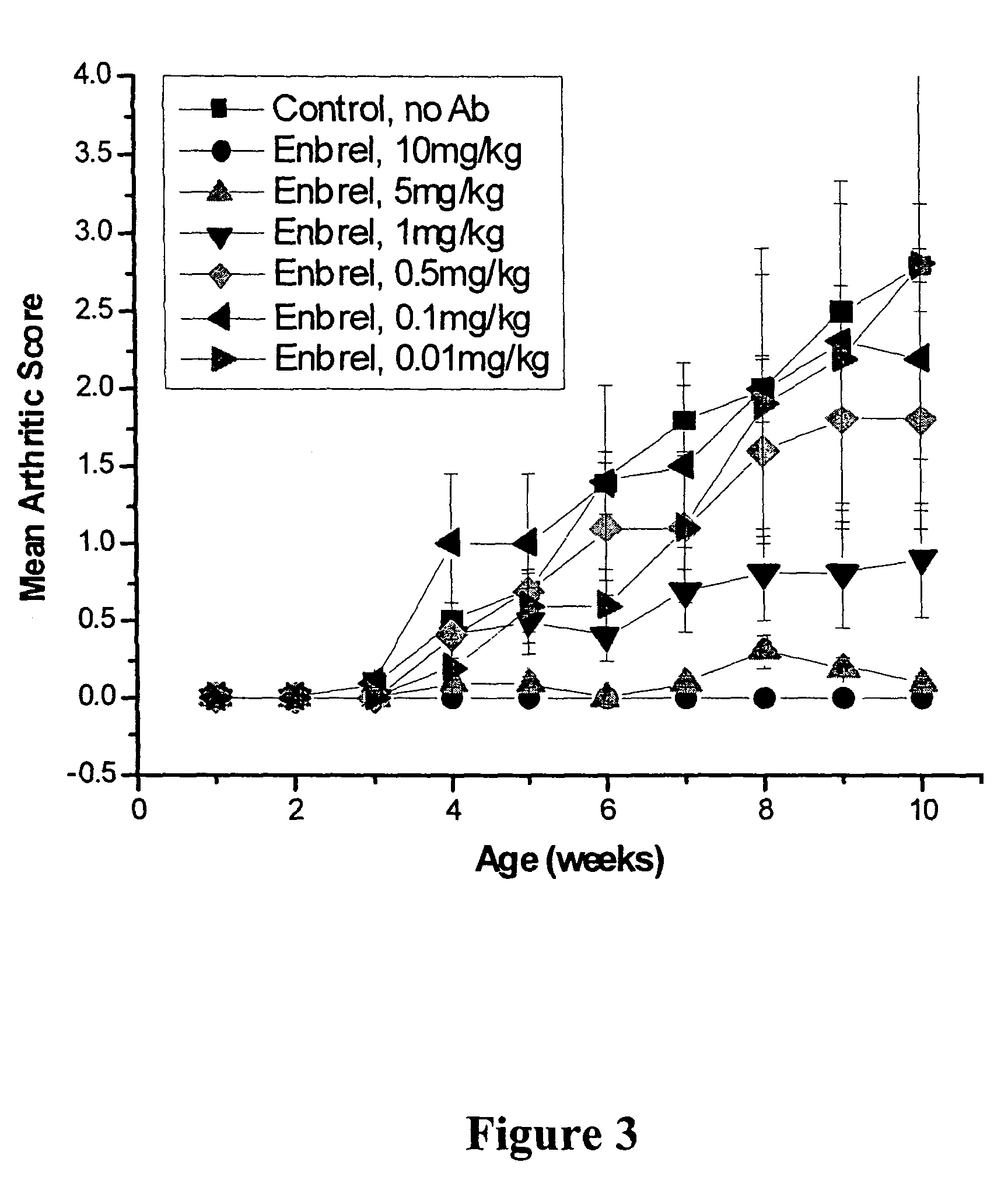Low dose methods for treating disorders in which TNFα activity is detrimental
a low-dose method and disease technology, applied in the direction of antibacterial agents, antibody medical ingredients, peptide/protein ingredients, etc., can solve the problems of short serum half life, inability to trigger certain human effectors, and limited use in vivo of tn
- Summary
- Abstract
- Description
- Claims
- Application Information
AI Technical Summary
Benefits of technology
Problems solved by technology
Method used
Image
Examples
example 1
Study of Efficacy of D2E7 Administered in Low Doses
[0101]Studies were performed to determine the efficacy of D2E7, infliximab, and etanercept at low doses in preventing polyarthritis using the transgenic (Tg197) murine model of rheumatoid arthritis (RA). Infliximab is a human-mouse chimeric antibody, and etanercept is a p75 TNF receptor construct. D2E7 is a fully human antibody derived from a human immunoglobulin gene library. Transgenic mice, Tg197 carry the human TNFα gene and spontaneously develop a disease similar to human rheumatoid arthritis (Keffer, J. et al, 1991, EMBO J. 10:4025). Signs of arthritic disease, including rheumatoid arthritis, include slower weight gain, joint distortion and swelling, joint deformation and ankylosis and impaired movement. Histopathological findings include hyperplasia of the synovial membrane, leukocyte infiltration, pannus formation, articular cartilage and bone destruction. Administration of anti-TNF agents prevents the development of polyart...
PUM
| Property | Measurement | Unit |
|---|---|---|
| concentration | aaaaa | aaaaa |
| concentration | aaaaa | aaaaa |
| swelling | aaaaa | aaaaa |
Abstract
Description
Claims
Application Information
 Login to View More
Login to View More - R&D
- Intellectual Property
- Life Sciences
- Materials
- Tech Scout
- Unparalleled Data Quality
- Higher Quality Content
- 60% Fewer Hallucinations
Browse by: Latest US Patents, China's latest patents, Technical Efficacy Thesaurus, Application Domain, Technology Topic, Popular Technical Reports.
© 2025 PatSnap. All rights reserved.Legal|Privacy policy|Modern Slavery Act Transparency Statement|Sitemap|About US| Contact US: help@patsnap.com



